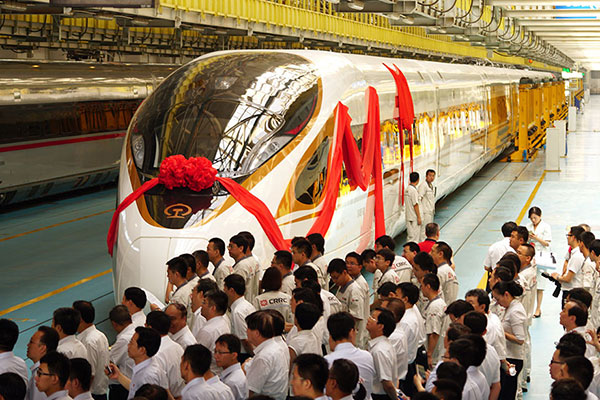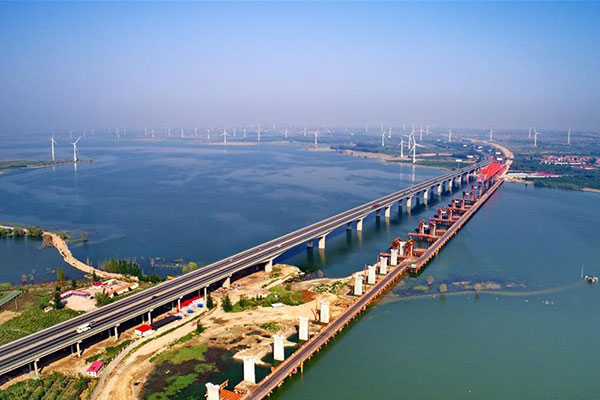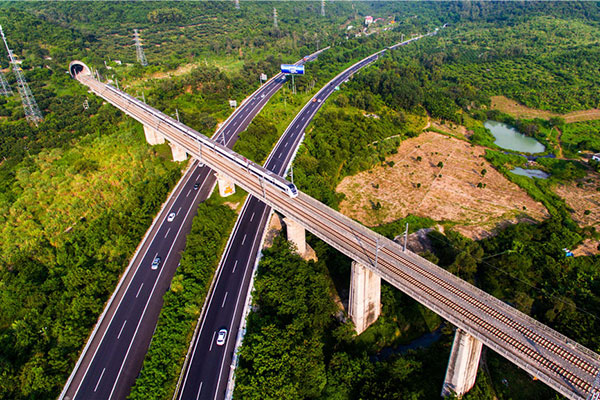
A naming ceremony of a new bullet train called “rejuvenation” is held in Beijing, June 25, 2017. [Photo/Xinhua]
From ‘Harmony’ to ‘Rejuvenation’: The way to pacesetter
Two high-speed trains of a new model called Fuxing, or Rejuvenation, were put into operation on the Beijing-Shanghai line on June 26.
Compared with the other high-speed trains in the country that have been designed and built with foreign technologies to different foreign standards, the new trains use core technologies developed in China and are built to a unified Chinese standard.
The launch of the new bullet trains means China’s high-speed trains have now bid farewell to their follower status and embarked on a new journey as pacesetters.

A train runs on the Lanzhou-Xinjiang High-speed Railway in Minle county of Zhangye city, Northwest China’s Gansu province, July 13, 2016. The 1,776-kilometer railway linking Lanzhou, capital of Gansu, and Urumqi, capital of Northwest China’s Xinjiang Uygur autonomous region, is one of the major passages for China’s Belt and Road Initiative. [Photo/Xinhua]

Construction of a bridge is underway across Beijing-Baotou railway, which is a section of the Beijing-Zhangjiakou high-speed railway line in Huailai county of Zhangjiakou, North China’s Hebei province, on June 26, 2017.[Photo/Xinhua]

An aerial view of a high-speed train running on the round-island track in Sanya, South China’s Hainan province, Oct 11, 2016. [Photo/Xinhua]